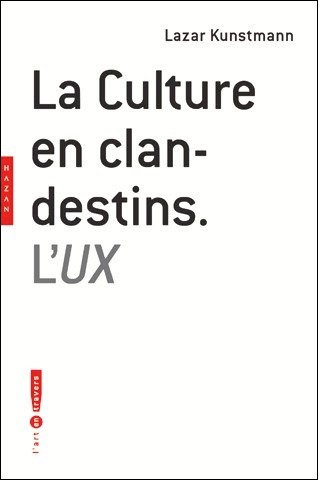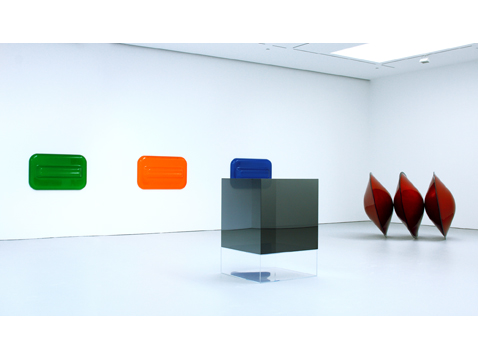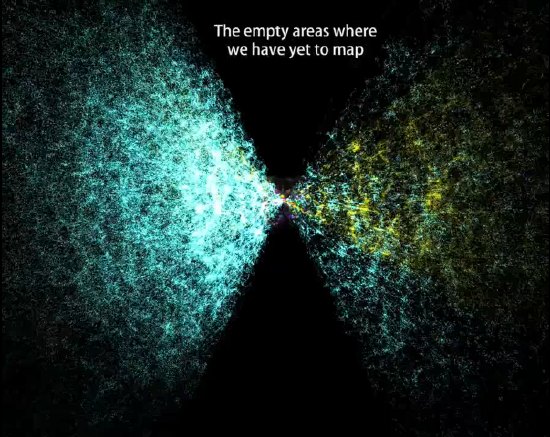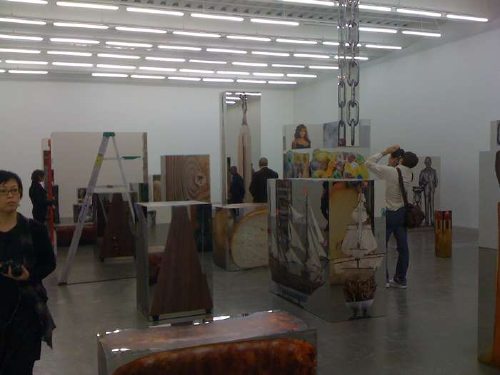Wow, if I didn’t worry the ghost of Fellini would come back and smack me upside the head, I’d say the book trailer for Chris Lehmann’s Rich People Things is the The Bicycle Thief of book trailers.
Instead, let’s go with, “It’ll make you say, ‘Hitler in a bunker who?'” That’ll fit on a marquee, won’t it?
Category: movies
Fumis de L’UX
The only word I can think of is the one Things already used: epic.
Sean Michaels goes long and deep for a Brick Magazine profile of the not quite invisible, not quite underground world of L’UX, Untergunther, La Mexicaine de Perforation, the culturebusting, space-infiltrating collective[s] who built a cinema in the catacombs of Paris, and who surreptitiously restored a giant clock in the Pantheon.
At least those are the activities we know about. Michaels talks at length with Lazar Kunstmann as well as with other urban explorers, to try to map out just what’s going on down there. I can’t say we really know any more than we did, but it’s still fascinating stuff.
I have written a lot about LMDP and Untergunther over the years. In 2004, I interviewed Kunstmann and was the first to publish the screening program for LMDP’s subterranean cinema, l’Arenne de Chaillot.. And when the Pantheon clock story broke, I posted pictures of their awesome Rietveldian crate chairs.
It’s been great stuff and great fun, but I’ve never been under any illusion that I’m breaking news or actually investigating. I’m just asking questions that seem obvious to me, but that other journalists or writers never seemed to ask [like what films would you show in a secret catacomb cinema?], and which Kunstmann and his UX colleagues decide to answer.
Michaels ponders at length the somewhat maddening empirical unverifiability of some of UX’s sensationalistic press coverage:
Kunstmann’s tales, the activities he recounts, the cataphile culture he invokes–it is, [UX chief] Lanso suggests, a fumis. It is smoke. It is the smoke that fills our vision, fills newspaper pages, conceals the group’s true projects and real work.
…
As for what this “real work” is, Lanso will not say. These projects, she underlines, are secret. “Don’t think that I say this against you, or against journalists in general. It’s the same for everyone. To be able to do what we do, this is how it has to work.”
I have reached a dead end. Lanso’s secrets are tantalizing, but I can neither confirm nor deny them. UX’s deepest riddles cannot be Googled. The question I ask is, Do I believe them? And then I ask, Do I want to believe them? And then I know my answer.
One thing I DO know for sure, I missed the debut of Kunstmann’s book last year. La Culture Clandestins, L’UX, which I now just ordered from Amazon.fr. Stay tuned.

The Lizard, the Catacombs, and the Clock: The Story of Paris’s Most Secret Underground Society by SEAN MICHAELS, Brick, Summer 2010, Vol 85. [brickmag via things]
Buy La culture en clandestins : L’UX [amazon.fr]
Mark Leckey’s In A Long Tail World @ICA
Last October, Mark Leckey presented In A Long Tail World at the ICA in London. From the writeups, it sounded like a cross between Chris Anderson, Joseph Beuys, Ted by way of the Guggenheim Las Vegas.
Leckey’s now loaded the whole thing onto YouTube, in six parts. Though he’s got a big, Laurie Anderson-y screensaver of an ending, my favorite segment is probably part 1, above. It includes both Leckey’s re-enactment of the earliest TV broadcasting experiment [a recap of his 2007 work, Felix Gets Broadcast] and his quotes from Charles Sirato’s Dimensionist Manifesto from 1936 which posited a new, dematerialized art with humans at the center.
If Leckey didn’t quite make the case that the Long Tail was the fulfillment of Sirato’s vision, it at least crossed its path. And it’s a good watch. [via gavin brown’s (!) blog]
All The Vermeers In New York

A little-known, early Vermeer, the CC145 Concrete Cutter, was apparently on exhibit on Bleecker St this week.
@averybrooks’ twitpics]
Vermeer CC155 [vermeer.com]
Gareth Long’s Untitled (Stories)

Gareth Long’s giant lenticular prints based on the iconic-yet-anachronous 1991 cover designs for JD Salinger’s books are freaking me out right now.
They’re like Noland or Morris Louis canvases, reanimated through some immediately dated, retrofuturistic technology. Something an aesthete in an early Star Trek movie might have had hanging on his wall. Jeremy Blakes that still work in a blackout.
Which is why they freak me out so much. A Color Field painting hangs unobtrusively, even decoratively, on the wall. A Blake requires turning it on and watching it. You can’t work with those things on in the background, any more than you could sleep with the Flavin on.
Long’s lenticulars thwart all that passive/active viewing negotiation by always being on. If they’re in the room with you, you can’t not look at them.
Go ahead, try it. They’re on view through next weekend at Kate Werble Gallery on Vandam St.
Above: Untitled (Seymour) is the most Salinger cover-esque, while Untitled (Zooey) is the most unabashedly psychedelic. Both images are from Long’s site, where he also offers video clips of the pieces.
Colby Chamberlain ties this “restless” aspect to Salinger in his Artforum review [artforum]
Untitled (Stories) [garethlong.net]
Primary Atmospheres at David Zwirner

Last month I watched the essentially sculptural process of designing and making fiberglass Eames chairs, and I wondered “how design and art ever stayed separate in those days.”
The answer, of course, was that it didn’t. David Zwirner just opened “Primary Atmospheres: Works from California 1960-1970,” the kind of show I’d totally expect to see in a museum [1] [2]. From the press release:
While most of the artworks included in the exhibition can be referred to as minimal in form, their seductive surfaces, often madeout of nontraditional materials, and their luminescent use of color and light characterize them as uniquely Southern Californian.
…
The works on view capture some of the more specific aesthetic qualities of the Los Angeles area during the1960s, where certain cutting-edge industrial materials and technologies were being developed at that time. Many of the artists employed unconventional materials to create complex, highly-finished and meticulous objects that have become associated with the so-called “Finish Fetish” aesthetic.
These artists were also influenced by the industrial paints applied to the surfaces of surfboards and cars, as well as the plastics of the aerospace industry.
Industrial and commercial materials and processes, surfboards, cars, signs, aerospace. As awesome and long-overdue as Zwirner’s show is, it sounds like there’s a lot more about the relationship of postwar art and design to be discovered, written about, and shown. So hop to.
Primary Atmospheres: Works from California 1960-1970, through Feb. 6, 2010 [davidzwirner.com]
16miles reports beautifully from the scene of the opening [16miles.com]
image above: works by Craig Kaufmann in vacuum-formed plexi; Larry Bell in mineral coated glass; and De Wain Valentine in fiberglass-reinforced polyester, via zwirner.
[1] In fact, it feels like a slice of the Pompidou’s much larger 2006 survey of Los Angeles, hopefully without the negligent destruction of the non-traditionally constructed art. Several of these artists were also in PS1’s odd “1969” show last year, so not quite as unexposed as the press release implies.
[2] Zwirner’s last Flavin show was the same museum-quality, but not to be found in a museum. And then there was the Flavin Green Gallery and Kaprow shows at Hauser & Wirth. How are there not more museums in town doing small-to-medium-sized, historical contemporary shows like this? The exhibition equivalent of an essay instead of a book? It seems like such a free way to work and think. PS1 is the closest I can think of, though I’m always ready to believe I just don’t get out enough.
Ernesto Neto’s Coconut Manifesto
What’s the bigger news, that the traditional shell-and-machete-based distribution system of beachfront coconut water is threatened by industrial-scale canned product? Or that Ernesto Neto is releasing catchy video manifestos for the cause on YouTube?
Água de coco Ernesto Neto [youtube via centre for the aesthetic revolution]
There’s also an Ernesto Neto listed as direção–along with Celso Vilalba and Tiago Gil–and as direção de fotografia [along with Vilalba] on this music video for “Ultimos dias,” by Brazilian heavy metal band called Kiara Rocks. What else is Ernesto hiding there on YouTube, hmm?
Nazis On A Plane
Here’s my 1st Annual List of The Top Two Films I Never Would’ve Expected To Watch On A Plane From London, Not Just Because They Were Overflowing Of The Kind Of Shock & Awesome Violence And Language That Used To Be Edited Out Of Airline Versions As A Matter Of Course, But Because The Teeny Tiny Subtitles Make Them Kind Of A Strain To Watch On Little Armchair Screens:
2. District 9
1. Inglorious Basterds
Which doesn’t mean they weren’t awesome. Inglorious Basterds is still my favorite sloppy, wet kiss to the movies since Cinema Paradiso.
The AMNH’s Digital Universe Atlas

The American Museum of Natural History maintains a Digital Universe Atlas, which maps all the objects in the universe using the most current data available.
They just released The Known Universe, an animated version of the data, in conjunction with the Rubin Museum of Art [which presumably paid to have the Powers of Ten-style roundtrip through all time and space begin and end in Tibet.]
While it’s encouraging to see so much empty-looking orbital space for me to put my satelloon, this is my favorite shot: “the empty areas we have yet to map.”
Watch The Known Universe by AMNH in HD [youtube via kottke]
Download or visit the Digital Universe Atlas [haydenplanetarium.org/universe]
Previous posts on the charming concept of trying to depict everything in the universe: On The Sky Atlas And The NGS-Palomar Observatory Sky Survey
Making Eames Shell Chairs, c. 1970
So fantastic. This promo film was made by Eames Office for Herman Miller in 1970, and it shows the making of fiberglass shell chairs, from the analog beginnings of design to the box.
The idea of design has been so thoroughly associated with computers in my mind, I’d forgotten the essential sculptural processes it used to involve: carving, modelmaking, molding, pouring… How design and art ever stayed separate in those days, I cannot imagine.
Also mind-blowing, but not in a good way: the nonchalance with which the gloveless, maskless employees casually lay down fiberglass matting and resin, and the one-scoop-at-a-time casting of the chairs’ aluminum bases. It’s all OSHA-mazing.
Wow, the 6-Volume DVD box set, The Films of Charles & Ray Eames, is on sale for just $30, down from $80. Fiberglass Chairs (1970) is on Vol. 4. [amazon]
So They’re Surrealist Dutch Landscapes?
Been trying to think about where the idea of painting an intentionally obscuring, computer-generated, institutionally applied abstract pattern onto a systematically produced aerial photographic map of the entire world fits into the historical painting/photography, abstract/representational context.
From Andre Bazin’s 1945 essay, “The Ontology of the Photographic Image” [pdf]
…[P]hotography ranks high in the order of surrealist creativity because it produces an image that is a reality of nature, namely, an hallucination that is also a fact. The fact that surrealist painting combnes tricks of visual deception with meticulous attention to detail substantiates this.
The Knew Museum

At the press preview of the New Museum’s Urs Fischer show yesterday, curator Massimiliano Gioni said that Fischer “treats reality as if it were software,” an assessment I suspect is designed to be tweeted more than analyzed.
Gioni and Fischer are entitled to use any metaphor they care to, of course, and this artist-as-reality-coder trope may be borne out nicely in the scholarly catalogue essay. But it also the kind of cross-disciplinary conceptual appropriation that leaves itself open to mockery by people who actually know what they’re talking about, like how NYU physicist Alan Sokal submitted a nonsensical paper, “structured around the silliest quotations [he] could find about mathematics and physics” made by postmodernist academics which questioned the hermeneutics of quantum gravity, to the cultural studies journal Social Text–who published it without question or peer review.
But looking at the work, Gioni’s explanation may turn out to be less deep but more valid than it first seems. The “Labyrinth of Mirrors” on the second floor, for example [above, in a photo from @artnetdotcom], is full of four-sided pictures of objects on mirrored boxes, which distort the space of the room as you walk around them. They feel like real-world approximations the XYZ-grid boxes inhabited by irregularly shaped virtual objects in Google Sketchup or the CAD/CAM programs. Which makes Fischer a user, not a coder.
Spatially, they labyrinth also gives off a bit active camo/invisibility vibe, like James Bond’s Aston Martin in Iceland, or–yes, it seems I have to go there–The Matrix.
So the world we see is just a construct, all ones and zeroes, and we’re too asleep to know it. Or the digital worlds where we increasingly spend our time–Google Earth, Halo, Second Life [oh wait, that’s right, no one actually does Second Life]–are rapidly eating away the physical world’s monopoly on reality, confounding our expectations and perceptions along the way. Maybe it’s all making too much of a throwaway soundbite.

One thing I’m sure of though, is that Rotterdam architect Roeland Otten finished his trompe l’oeil Transformatie project just in time. [via]
Authenticity vs. Realness
Look, I dragged out my old Topsiders, too, same as the next guy. But I’ve just about had it up to _here_ with the obsession with “authenticity” that is the uncritical core of this dragging-on moment in men’s fashion.
It ranges from picayune discussions of selvedge denim carried on over your dad’s Miller High Life; to competitive fleamarket picking to rediscover the most obscure canvas tote bag manufacturer; to American-made worker boots for publicists; to the umpteenth reincarnation WASP-y preppy fashion, called Trad, just like it was in Japan in 1986. It’s as if the Emperor could somehow be naked and wearing two NOS Izod shirts, small batch, reissued Duck Head khakis, and Japanese export Redwings at the same time.
It all reminds me of nothing so much as Jennie Livingston’s documentary, Paris is Burning. Schoolboy Realness, Town & Country, Executive Realness. Here’s the late, great drag queen philosopher [and accomplished body-stasher!] Dorian Corey:
In a ballroom, you can be anything you want. You’re not really an executive, but you’re looking like an executive. And therefore, you’re showing the straight world that, “I can be an executive. If I had the opportunity, I can be one. Because I can look it.” And that is a kind of fulfillment.
Your friends, your peers, are telling you, “Oh, you’d make a wonderful executive.”
And just line this quote from Pepper LaBeija [above, in fur], legendary head of the House of LaBeija…
To be able to blend. That’s what realness is.
If you can pass the untrained eye, or even the trained eye, and not give away the fact that you’re gay, that’s when it’s real.
The idea of realness is to look as much as possible like your straight counterpart.
The realer you look means you look like a real woman. Or you look like a real man. A straight man.
It’s not a takeoff, or a satire. No. It’s actually being able to be this.
…up against the Trad guy in the Observer yesterday:
“When done right, it should almost be invisible,” said John Tinseth, 52, an insurance broker and longtime traddy who’s been writing a blog called The Trad–anonymously, until now–for the past two years. He was on the phone from his West 57th Street apartment, dressed, he said, in L. L. Bean khakis and moccasins and a striped yellow Oxford University rugby shirt.
“A guy should walk right by you and he’ll have the whole thing down and you won’t even notice,” Mr. Tinseth said. “That’s when it’s done perfectly.”
Authenticity is a pose, people, plain and simple.
Space Flight Dolphin, By Richard Clar

San Francisco Ocean Film Festival – “Space Flight Dolphin – the art of SETI”, originally uploaded by oceanfilmfest.
Space Flight Dolphin is a life-sized “inflatable dolphin sculpture/satellite by the space artist Richard Clar. The sculpture/satellite will be made from a memory alloy that springs into shape when heated by the sun.
It will transmit a magnetic signal “modulated by dolphin ‘voices'” [Clar’s quotes] in an attempt to communicate with extra-terrestrial intelligence. Also, “as the sculpture/satellite orbits the Earth, the dolphin voices will be monitored in various museums around the world, providing a link between different people and cultures on our own planet.”
Near as I can tell, Space Flight Dolphin was conceived in 1982, and was approved by NASA for inclusion in its special payload program in 1986. Which is the same year Star Trek IV came out. So if anyone copied anyone, it was Star Trek.
This still is from an animated short which was screened last year at the San Francisco Ocean Film Festival.
Space Flight Dolphin: An Art-and-Technology Payload for the Space Shuttle | Richard Clar’s Art Technologies [arttechnologies.com]
Fall 2009 NY Events Calendar
For anyone interested in improving his chances of running into Brian Sholis at a brainy and/or arty event, he has compiled a rather awesome calendar of openings, symposia, talks, readings, screenings, and other happenings in New York.
Me, I just loaded it onto my iPod Touch calendar, so I can be reminded nearly every day that I’m missing something interesting. Though I definitely plan on going to James Welling’s talk with Jan Dibbets at MoMA on–well, it’s right there in the calendar.
Fall 2009 New York Events Calendar [briansholis.com]
